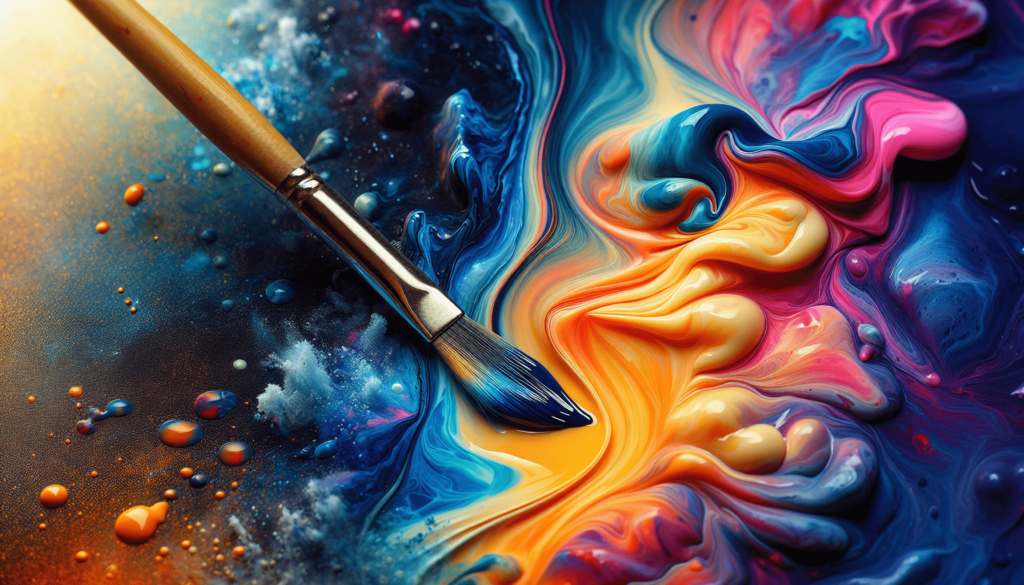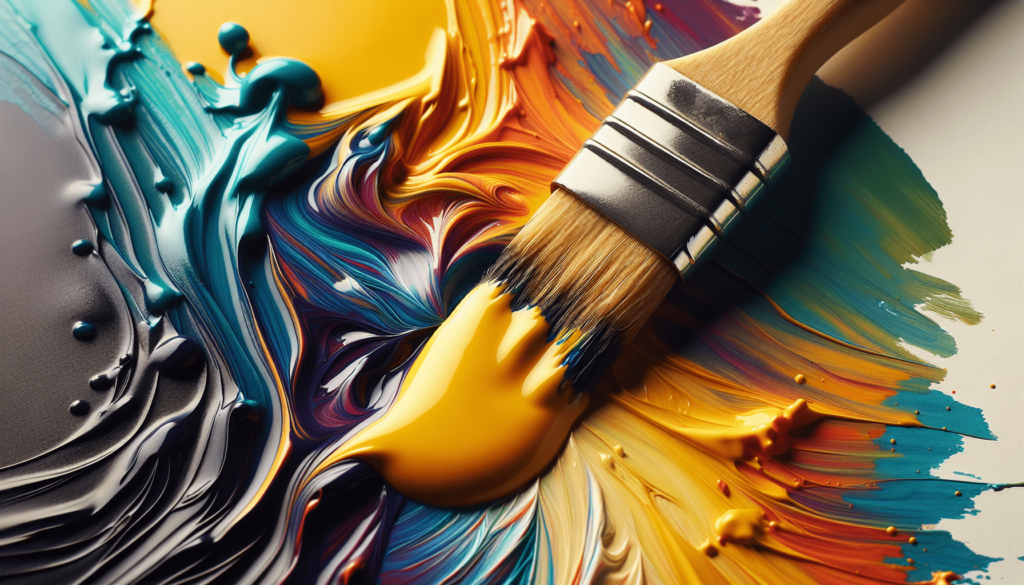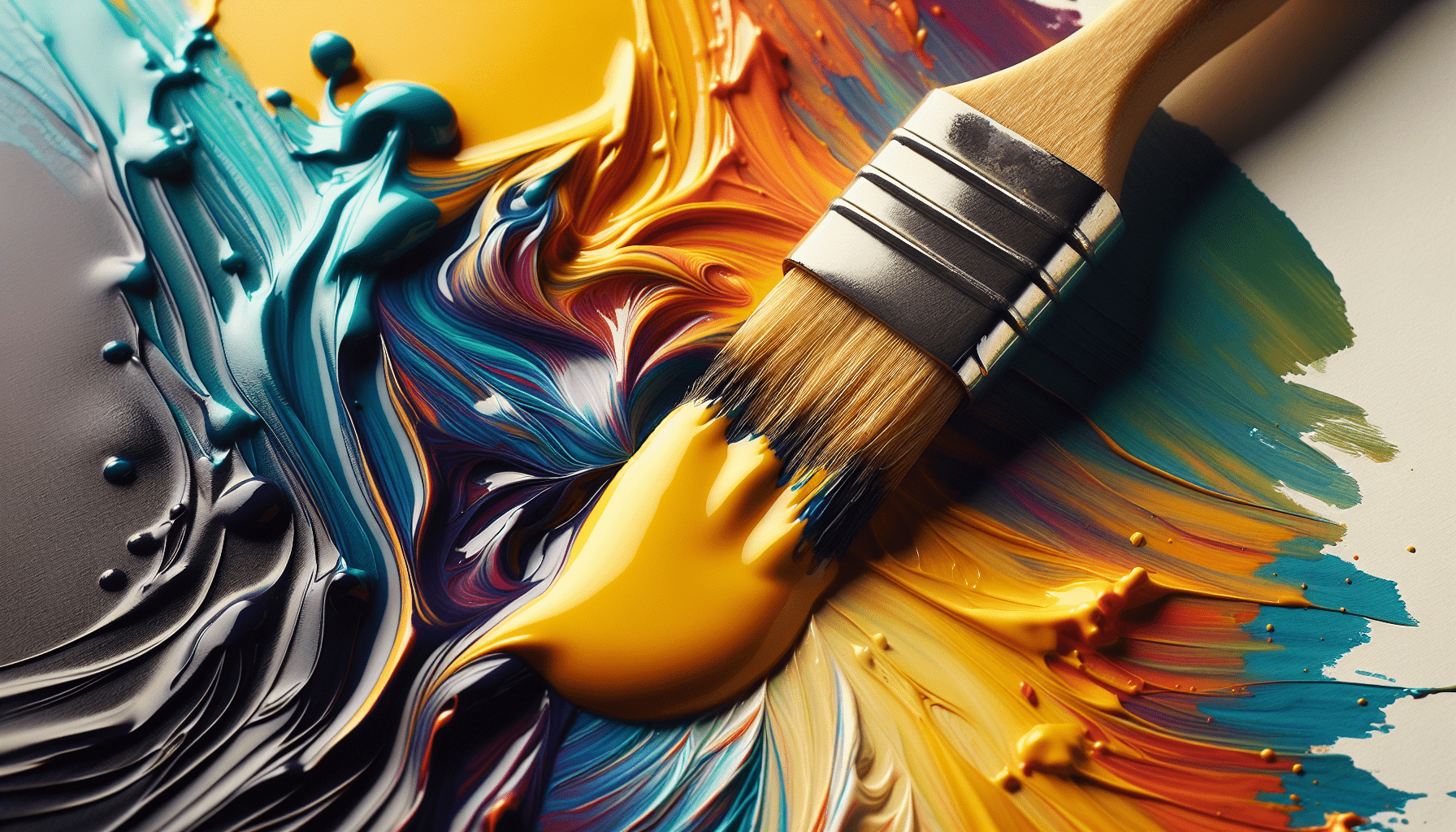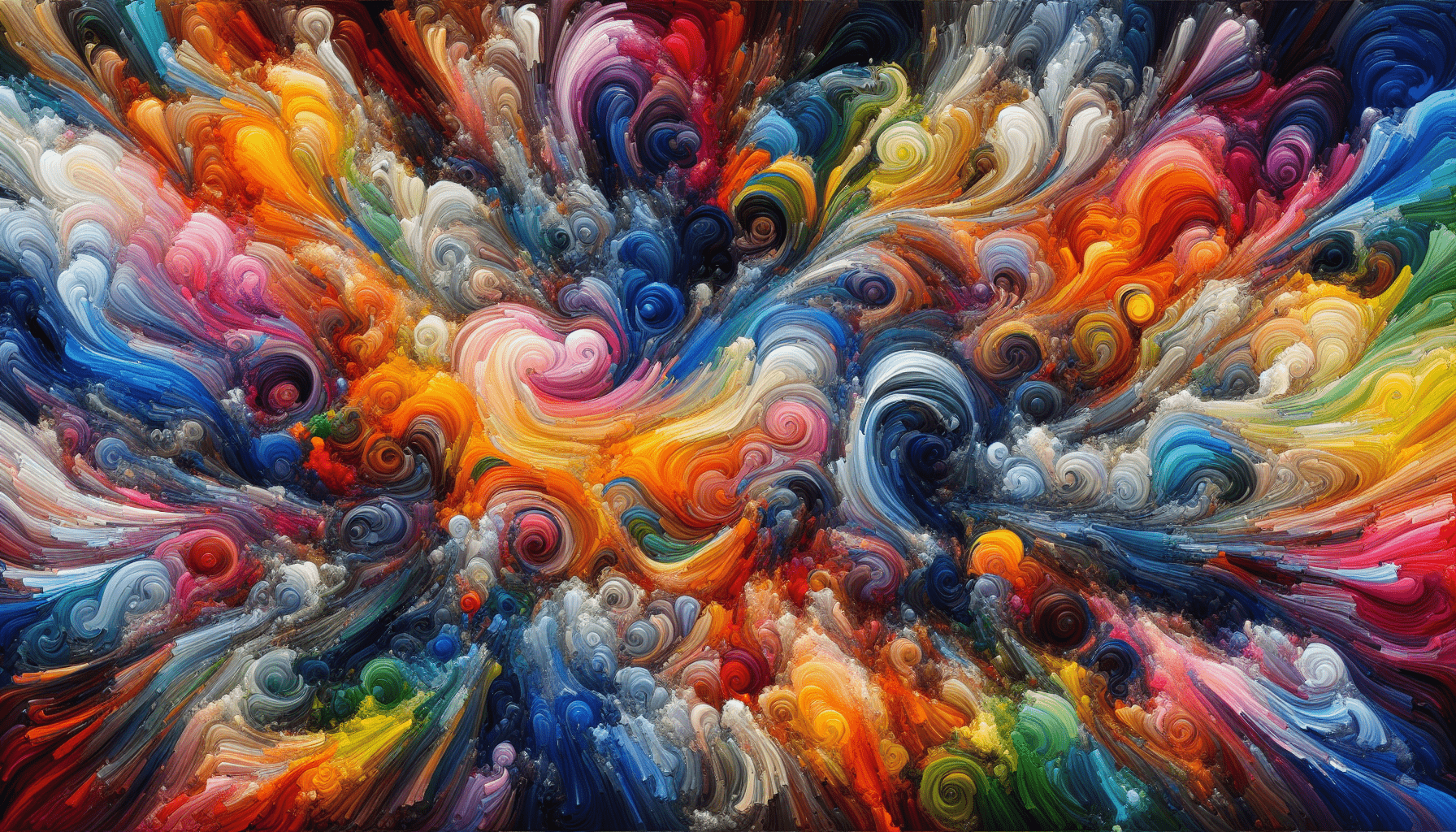In the world of painting, the compatibility of different types of paint can often be a topic of curiosity and exploration. One question that frequently arises is, “Can you mix tempera and acrylic paint?” It is a valid inquiry, as both tempera and acrylic paints have their own unique properties and characteristics. Therefore, it is important to understand whether these two mediums can harmoniously blend together to create stunning works of art. In this article, we will take a closer look at the compatibility of tempera and acrylic paint, examining their individual attributes and discussing the potential outcomes of their combination.

Overview of Tempera and Acrylic Paint
Definition of Tempera Paint
Tempera paint is a type of water-based paint that is made by mixing pigments with a water-soluble medium such as egg yolk or a glue-like substance called gum arabic. It has been used for centuries and is known for its vibrant colors and smooth, matte finish. Tempera paint is typically applied to various surfaces, including wood, cardboard, and paper.
Definition of Acrylic Paint
Acrylic paint, on the other hand, is a type of water-based paint that is made by mixing pigments with a synthetic polymer emulsion. It has gained popularity in the art world due to its versatility and fast-drying properties. Acrylic paint can be applied to a wide range of surfaces, including canvas, paper, and even metal. It offers a range of finishes, from matte to glossy.
Key Differences between Tempera and Acrylic Paint
While both tempera and acrylic paint are water-based paints, there are several key differences between the two. One of the main differences is in the binding medium used. Tempera paint uses egg yolk or gum arabic as a binder, while acrylic paint uses a synthetic polymer emulsion. This difference in binders affects various aspects of the paints, including their drying time, durability, and compatibility with other mediums. Another difference lies in the finishes they offer, with tempera paint typically providing a smooth matte finish and acrylic paint offering a range of finishes, including glossy options.
Properties and Characteristics
Tempera Paint Properties
Tempera paint has unique properties that make it distinct from other types of paints. It has a high pigment load, meaning that the colors are vibrant and intense when applied. The paint has a quick drying time, allowing artists to work with multiple layers or make quick adjustments. It also has good adhesion to surfaces, ensuring that the paint adheres well and does not easily chip or flake. However, tempera paint has a limited range of blending and layering capabilities, making it more suitable for flat, opaque applications.
Acrylic Paint Properties
Acrylic paint possesses its own set of properties that make it a popular choice among artists. It offers a wide range of colors, including opaque and transparent options, allowing for various effects and techniques. Acrylic paint has a fast drying time, making it ideal for artists who prefer to work quickly or who want to build up layers of paint. It also has good adhesion and durability, ensuring that the artwork remains intact over time. Additionally, acrylic paint allows for easy blending and layering, providing artists with more flexibility and control over their work.
Incompatibility of Tempera and Acrylic Paint
While tempera and acrylic paints can be used separately and have their own unique characteristics, they are not easily compatible when mixed together. The key reason for this incompatibility lies in the different binders used. Tempera paint uses an organic binder, while acrylic paint uses a synthetic polymer binder. When these two mediums are mixed, they can cause issues such as cracking, peeling, and loss of the paint’s intended qualities. Therefore, it is generally recommended to avoid mixing tempera and acrylic paint unless using specific techniques or precautions.
Mixing Tempera and Acrylic Paint
Experimenting with Mixing Tempera and Acrylic Paint
In some cases, artists may be tempted to experiment with mixing tempera and acrylic paint to achieve unique effects or to utilize both mediums in a single artwork. While this can create interesting results, it is important to approach the process with caution. Artists must be prepared for potential issues and be willing to make adjustments as needed.
Effects on Color and Opacity
When mixing tempera and acrylic paint, artists should be aware that the colors may not mix accurately, especially if the paints have different pigment compositions. Tempera paint tends to have a more limited color palette compared to acrylic paints. Additionally, mixing the two paints may result in a decrease in opacity, altering the intended color values and vibrancy.
Effects on Drying Time
As mentioned earlier, tempera and acrylic paints have different drying times. Tempera paint typically dries quickly, while acrylic paint dries at a slower rate. When combined, the drying time can be unpredictable, resulting in a surface that may dry unevenly or take longer to dry overall. This can affect the artist’s ability to layer or blend colors effectively.
Adhesion and Durability
Mixing tempera and acrylic paint can also compromise the adhesion and durability of the final artwork. The different binders used in each paint can cause the layers to separate or detach over time, leading to cracking, peeling, or flaking. It is essential to consider the longevity of the artwork and its intended purpose when deciding whether to mix these two paints.
Tips for Mixing Tempera and Acrylic Paint
If an artist decides to mix tempera and acrylic paint, there are some precautions that can be taken to minimize potential issues. It is recommended to test the mixture on a small surface or scrap piece of material to observe how the paints interact and dry. Artists may also choose to apply a layer of primer or sealer beforehand to improve adhesion. Additionally, using additives or mediums designed specifically for mixing different paint types can help enhance compatibility and durability.
Possible Issues
Cracking or Peeling
One of the most common issues when mixing tempera and acrylic paint is the potential for cracking or peeling. The different binders used in each paint can create tension as they dry, leading to the separation of layers and the development of cracks or flakes. This issue can compromise the integrity of the artwork and make it more susceptible to damage over time.
Flaking or Chipping
Similar to cracking, flaking or chipping can occur when tempera and acrylic paints are mixed. The incompatible binders and drying times can cause the paint layers to detach from the surface or from each other. This can result in flakes or chips of paint falling off, detracting from the overall appearance and longevity of the artwork.
Loss of Paint’s Intended Qualities
Mixing tempera and acrylic paint can also result in the loss of some of the unique qualities that each paint offers. For example, tempera paint’s matte finish may become altered or less pronounced when mixed with acrylic paint. The texture and opacity of the paints may also be affected, potentially diminishing the desired effects or techniques an artist may want to achieve.
Artwork Preservation Concerns
Another consideration when mixing tempera and acrylic paint is the long-term preservation of the artwork. The incompatibility between the binders can lead to issues over time, such as yellowing or decay. If the artwork is intended for display or sale, it is crucial to weigh the potential risks against the desired aesthetic or creative effects.

Artistic Techniques
Mixed Media Artwork
While directly mixing tempera and acrylic paint may pose challenges, artists can still incorporate both mediums in a single artwork through the use of mixed media techniques. Mixed media refers to the combination of different materials, such as paints, collage elements, or found objects, to create a cohesive and layered artwork. By using tempera and acrylic paints separately and strategically integrating them with other materials, artists can achieve a diverse range of effects and textures.
Creating Texture and Dimension
Both tempera and acrylic paints offer opportunities to create texture and dimension in artwork. Tempera paint’s ability to dry quickly and evenly allows for the application of multiple layers, resulting in a buildup of texture. Acrylic paint, with its ability to retain brushstrokes and hold peaks, can also be used to add depth and dimension. By selectively layering and manipulating these paints, artists can achieve dynamic and visually engaging surfaces.
Blending Effects
While tempera paint may have limitations when it comes to blending, acrylic paint offers more versatility in terms of color mixing and blending techniques. Artists can utilize acrylic paints to achieve smooth transitions between colors or create gradients of hue and value. By skillfully combining the two types of paints, artists can explore a range of blending effects that enhance the visual impact of their artwork.
Layering and Glazing
Layering and glazing techniques can be effectively employed with both tempera and acrylic paints, either separately or in combination. Artists can build up layers of paint to create depth and richness in their artwork, particularly when utilizing opaque tempera paints. Acrylic paints, with their translucent qualities, are well-suited for glazing, which involves applying thin layers of transparent paint to alter the color or tone of an underlying layer. By integrating these techniques, artists can achieve captivating and luminous effects in their paintings.
Limitations and Challenges
Color Mixing Constraints
One of the limitations when mixing tempera and acrylic paint is the challenge of achieving accurate and consistent color mixing. Tempera paint typically has its own limited color palette, while acrylic paint offers a more extensive range of pigments. When mixing these paints, the resulting colors may not match the artist’s intentions or expectations. Artists may need to experiment and adjust their color mixing techniques to overcome this constraint.
Consistency and Workability
The consistency and workability of tempera and acrylic paints differ, which can pose challenges when mixing them. Tempera paint has a thinner consistency and dries quickly, making it suitable for quick brushwork and defined lines. Acrylic paint, on the other hand, has a thicker consistency and longer drying time, allowing for more extended blending and manipulation. When combined, the resulting consistency and drying time can be unpredictable and may require adjustments to achieve the desired artistic effects.
Longevity and Preservation
The lifespan and preservation of artwork that incorporates both tempera and acrylic paint can be a concern. The incompatibility of the binders used in these paints can affect the durability and stability of the artwork over time. Artists must consider the long-term impact and potential degradation when deciding how to mix these paints, as well as when choosing appropriate preservation techniques.
Professional vs. Amateur Use
The decision to mix tempera and acrylic paint may also depend on the artist’s level of expertise and the intended purpose of the artwork. Professional artists who are experienced with mixed media techniques may have a better understanding of how to overcome the challenges and limitations associated with mixing these paints. Conversely, amateur artists or those who are seeking long-term preservation of their artwork may choose to stick to using one type of paint or explore other compatible options.
Alternatives to Mixing
Choosing Compatible Paints
Rather than attempting to mix tempera and acrylic paint, artists can explore other compatible paint options that offer similar qualities or effects. For example, gouache paint is another water-based medium that shares some similarities with tempera paint, such as its matte finish and opaque qualities. Additionally, watercolor and acrylic gouache can provide vibrant colors and varied finishes, making them suitable alternatives for artists looking for specific effects without the challenges of mixing incompatible paints.
Using Varnishes or Sealants
If an artist wishes to combine tempera and acrylic paints in a single artwork, utilizing varnishes or sealants can help to protect and preserve the final piece. Applying a varnish or sealant atop the completed artwork can help to unify the various paint layers and provide a protective barrier against potential issues such as cracking or peeling. However, it is important to choose a varnish or sealant that is compatible with both tempera and acrylic paints to avoid any further incompatibility or chemical reactions.
Utilizing Mixed Media Techniques
As mentioned earlier, one alternative to mixing tempera and acrylic paint directly is to utilize mixed media techniques. By incorporating other materials, such as collage elements, found objects, or even other compatible paints, artists can achieve a layered and dynamic artwork. This approach allows for the integration of both tempera and acrylic paints without the risk of incompatibility. Artists can experiment with combining these materials in various ways to create unique textures, effects, and visual narratives.
Safety Precautions
Ventilation and Avoiding Inhalation
When working with any type of paint, including tempera and acrylic, it is important to ensure proper ventilation in the workspace. This can help to prevent the build-up of fumes or harmful particles that may be released during the painting process. Adequate ventilation can be achieved by opening windows, using fans, or working in a well-ventilated area. Additionally, artists should avoid inhaling paint particles by using a respirator or mask if necessary.
Skin and Eye Protection
To avoid any potential skin irritation or eye injuries, artists should take precautions when working with both tempera and acrylic paints. Wearing protective gloves can help to prevent skin contact with the paints. If the paint comes in contact with the skin, it should be washed off immediately with soap and water. Eye protection, such as goggles or safety glasses, should also be worn to prevent accidental splashes or direct contact with the eyes.
Proper Disposal of Waste
Proper disposal of waste materials, including paint containers, brushes, and leftover paints, is essential to ensure environmental safety. Many localities have specific guidelines for disposing of paint and paint-related products. Artists should familiarize themselves with these regulations and follow them accordingly. This may include drying out or solidifying leftover paint before disposal or taking them to designated recycling facilities.
Conclusion
Weighing Pros and Cons
In conclusion, the decision to mix tempera and acrylic paint is not one to be taken lightly. While there may be some intriguing artistic possibilities in combining these two mediums, the potential risks and challenges should be carefully considered. Factors such as color accuracy, drying time, adhesion, and long-term preservation must be weighed against the desired artistic goals and intent.
Considering Artistic Goals and Intent
The decision to mix tempera and acrylic paint should ultimately be driven by the artist’s individual artistic goals and intent. If the desired effects can be achieved using other compatible mediums or mixing techniques, it may be wise to explore those options instead. However, artists who are experienced with the properties and limitations of both tempera and acrylic paints may be able to incorporate them successfully into their artwork.
The Final Decision: To Mix or Not to Mix
Ultimately, the final decision to mix or not to mix tempera and acrylic paint rests with the artist. By understanding the properties, characteristics, and potential issues associated with each paint, artists can make informed choices that align with their artistic vision and creative process. Whether choosing alternative paint combinations, utilizing mixed media techniques, or exploring other compatible options, artists can continue to push their boundaries and create captivating and lasting artworks.



